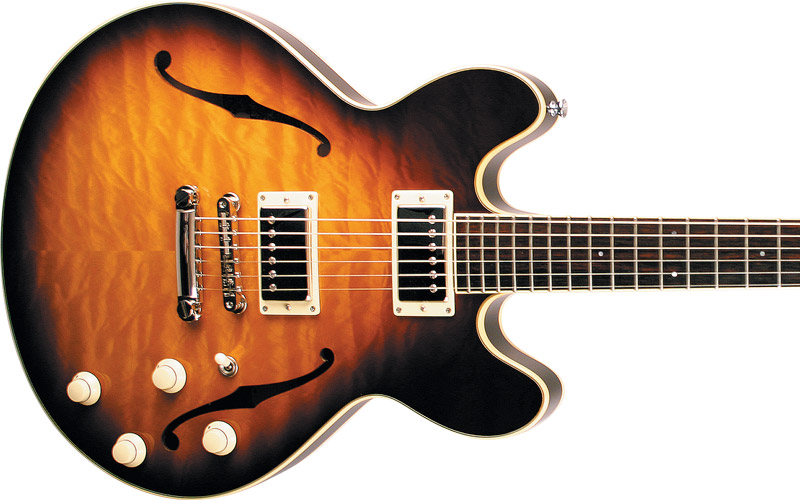-
Tony Nobles
The Collings I-35
Soul in the Details
Occasionally, in the world of guitars, events influence the market. The introduction of a new guitar can send ripples through the industry. Not so long ago, Paul Reed Smith redefined quality workmanship and set a new standard. Bill Collings has been building highly regarded acoustic guitars for decades. He created an organization that produces boutique-quality…
-
Tony Nobles
VG PAF Shoot-Out 2005
Given the unwavering popularity of the humbucker pickup, the constant injection of new builders, and the popuarlity of our 1998 comparison feature, we thought we’d note the anniversary of the design of the humbucker with another “shoot-out.” We started our test with the pickups in the 1956 Gibson Les Paul Model before beginning the arduous…
-
Tony Nobles
Collings I-35
Soul in the Details
2006 Collings I-35. Occasionally, in the world of guitars, events influence the market. The introduction of a new guitar can send ripples through the industry. Not so long ago, Paul Reed Smith redefined quality workmanship and set a new standard. Bill Collings has been building highly regarded acoustic guitars for decades. He created an organization…
-
Tony Nobles
Tony Nobles Resonator
Museum-Bound Resonator
This guitar is a special project built after I was approached by the new Braunfels (Texas) Museum of Art and Music to show a guitar in an exhibit of Texas musical instrument builders. This exhibit was to coincide with a the traveling Smithsonian exhibit “Hearts and Hands,” which features photos of instrument builders. I was…
-
Tony Nobles
David Grissom and David Holt
Two-Guitar Story
When Austinites entertain music-loving friends from out of town the typical question is, “Who should we go see while we’re here?” And in a city loaded with good bands, the most repeated answer was always, “Storyville!” Austin’s version of a supergroup (a label the band hated) was fronted by singer Malford Milligan – one of…
-
Tony Nobles
PAF Test Run
From VG's
Sorry the shop is a little crowded today, but I’ve invited some friends over to listen to a few PAFs. I have some Gibsons, Tom Holmes, and Lindy Fralins loaded into some really cool Les Pauls. Before we get loud, let me introduce my friends. Terry Oubre, from Kendrick Amps, Dave Hazlett, from Guitar Resurrection,…

